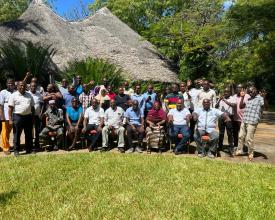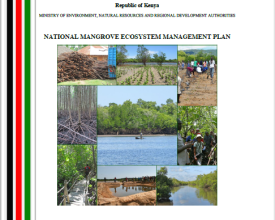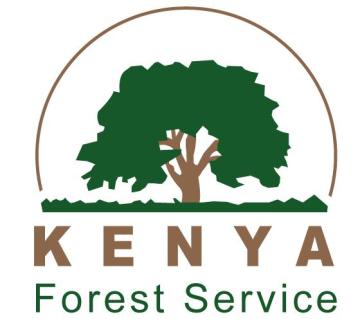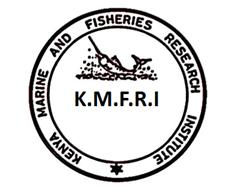
Strengthening coordination through National and County Mangrove Management Committees in Kenya
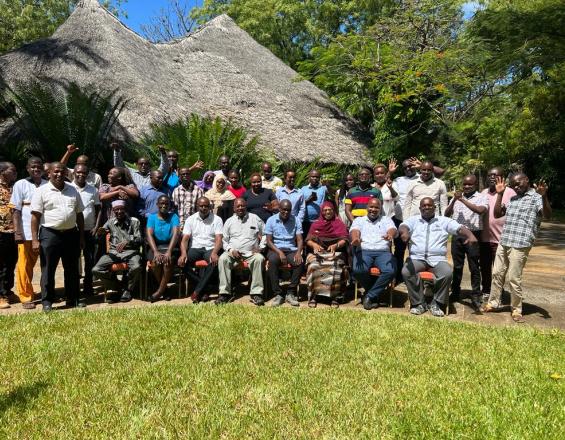
The Kenya National Mangrove Ecosystem Management Plan 2017-2027 identifies weak governance as the main cause of mangrove ecosystem degradation in Kenya. It notes that governance and institutional frameworks play an important role in mangrove forest management in Kenya. The plan provides for establishment of national and county mangrove management committees as advisory organs to enhance coordination and knowledge sharing amongst stakeholders. Mangrove management in Kenya has gained traction over the years with varied actions at different levels and organizations. Community groups are at the centre of of restoration, and utilization, while a number of non-governmental organizations are actively involved at different scales. Kenya Forest Service is the Government agency mandated with provision for the development and sustainable management, including conservation and rational utilization of all forest resources, including mangroves. With the many players, weak coordination and duplication of efforts is highly experienced.
Context
Challenges addressed
Interest in mangrove management including restoration and use (extractive and non-extractive) in Kenya has grown over the years. The sector has experienced a surge in number of entities and individuals who are keen at contributing the management of the forest for socioeconomic and ecological wellbeing. This however comes with a risk considering that mangrove of Kenya cover approximately 61000ha along the 576km coastline which can accommodate specific number of interventions. Different initiatives also have different approaches and thus doubts on achieving perceived impact holistically. There are also risks of duplication of efforts or in some instances conflict over space. With all the good intentions, some level of coordination was needed to ensure value and promote best practices with the aim of contributing to national development plans and global commitments.
Location
Process
Summary of the process
Kenya's Forest Conservation and Management Act provides for preparation of management plans for all gazetted forests in the country. Development of the National Mangrove Ecosystem Management Plan 2017-2027 is embedded into the Act and was meant to enhance a paradigm shift from the the traditional view of mangroves solely as sources of wood products but rather their additional role in fisheries production, biodiversity conservation, climate action and shoreline protection. A consultative and collaborative approach was taken during the development and is emphasized in the implementation of the plan. Kenya Forest Service is mandated to spearhead the implementation in partnership with all relevant stakeholders through an advisory committee hereby referred to as the National and County Mangrove Management Committees at the two levels. This was established through a consultative process that entailed drafting of the Terms of Reference, stakeholder sensitization, nomination of members by institutional heads, official unveiling of the committee during the 2022 World Mangrove Day celebrations, operationalization including contribution to national processes such as organizing World Mangrove Day celebrations and reviewing Climate Change (Amendment) Bill 2023
Building Blocks
National Mangrove Ecosystem Management Plan
National Mangrove Ecosystem Management Plan 2017-2027 provides for establishment of National and County Mangrove Management Committees to serve as advisory organ to inform Kenya Forest Service on the technical issues regarding mangrove management. The committees at national and in the five counties of Kwale, Mombasa, Kilifi, Tana River and Lamu, have been established and operationalized. Their membership comprise of technical experts for mangrove ecosystem relevant disciplines, including; Forestry, Fisheries, Wildlife, Water, Land, and Climate, and representatives of communities and Civil Society/Non-governmental organizations.
Enabling factors
The National Mangrove Ecosystem Management Plan was developed through a participatory process and adopted by Government.
Lesson learned
- Inclusive participation of Government, community, Civil Society/Non-governmental organizations
- Government policy that provides for establishment of the committees to coordinate mangrove management
Committee establishment, formalization and operationalization
Inclusive and participatory mapping of all stakeholders in the mangrove space in the five counties of Kwale, Mombasa, Kilifi, Tana River and Lamu. A series of meetings for sensitization on the National Mangrove Management Plan, and later facilitated formation of the national and five county committees. The committees were then facilitated in developing their workplans and executing some of the activities. This has since been picked up.
Enabling factors
Partnership and collaboration.
Inclusive processes
Lesson learned
Willingness and trust amongst partners
Forest Conservation and Management Act, No. 34 of 2016
An Act of Parliament that provide for the development and sustainable management, including conservation and rational utilization of all forest resources for the socio-economic development of the country and for connected purposes
Enabling factors
Provides for overall management of forest in the country
Impacts
Change in practice has been the biggest achievement from the establishment and operationalization of the committees. Organization and agenda setting for World Mangrove Day celebrations in the country used to be done centrally in Nairobi since 2019. Fragmented operations and limited information sharing amongst stakeholders caused friction and duplication of efforts. The National Mangrove Management has successfully organized three national dialogues and three World Mangrove Day celebrations through a participatory and inclusive process with all stakeholders feeling valued and contributing to the course. Topical issues discussed during the dialogue such as 'Demystifying Mangrove Restoration' in 2024 led to the development of two documents, National Mangrove Restoration guidelines and Mangrove Forest Management Technical Order thus streamlining actions. The committee have contributed to the revision of one policy document, the Climate Change (Amendment) Bill 2023 providing mangrove-specific submission. Operations are on-course for the committee, who are actively providing advisory to the implementation of the National Mangrove Management Plan.
Beneficiaries
- Kenya Forest Service
- Community Conservation Groups
- Civil Society Organizations/Non-governmental Organizations
Global Biodiversity Framework (GBF)
Sustainable Development Goals
Story
Establishment of coordination mechanisms to guide mangrove actions was envisaged during the development of the National Mangrove Ecosystem Management Plan 2017-2027. Actual establishment and operationalization wasn't immediate despite being embedded in a policy document. It however came up as a need in various fora. An inclusive and participatory process was used bringing together a technical team in 2021 that revisited the objective of proposing the establishment of an advisory group. Development of Terms of Reference to guide the functioning of the committee was initiated and later finalized and validated by a wider stakeholders. Formal request for nomination of members to the committee was made by Kenya Forest Service to the institutions defined in the management plan. The National Mangrove Management Committee was finally constituted and unveiled by the Chief Conservator of Forests-Kenya Forest Service on 26 July 2022 at the World Mangrove Day celebrations in Kilifi County. This marked the journey of operationalizing the committee guided by the ToRs. Establishing five County Mangrove Management Committees of Kwale, Mombasa, Kilifi, Tana River and Lamu was an immediate result. The committee has therefore continued to evolve overcoming financial challenges through leveraging on partnership with the Global Mangrove Alliance-Kenya Chapter and other partners to drive actions.
